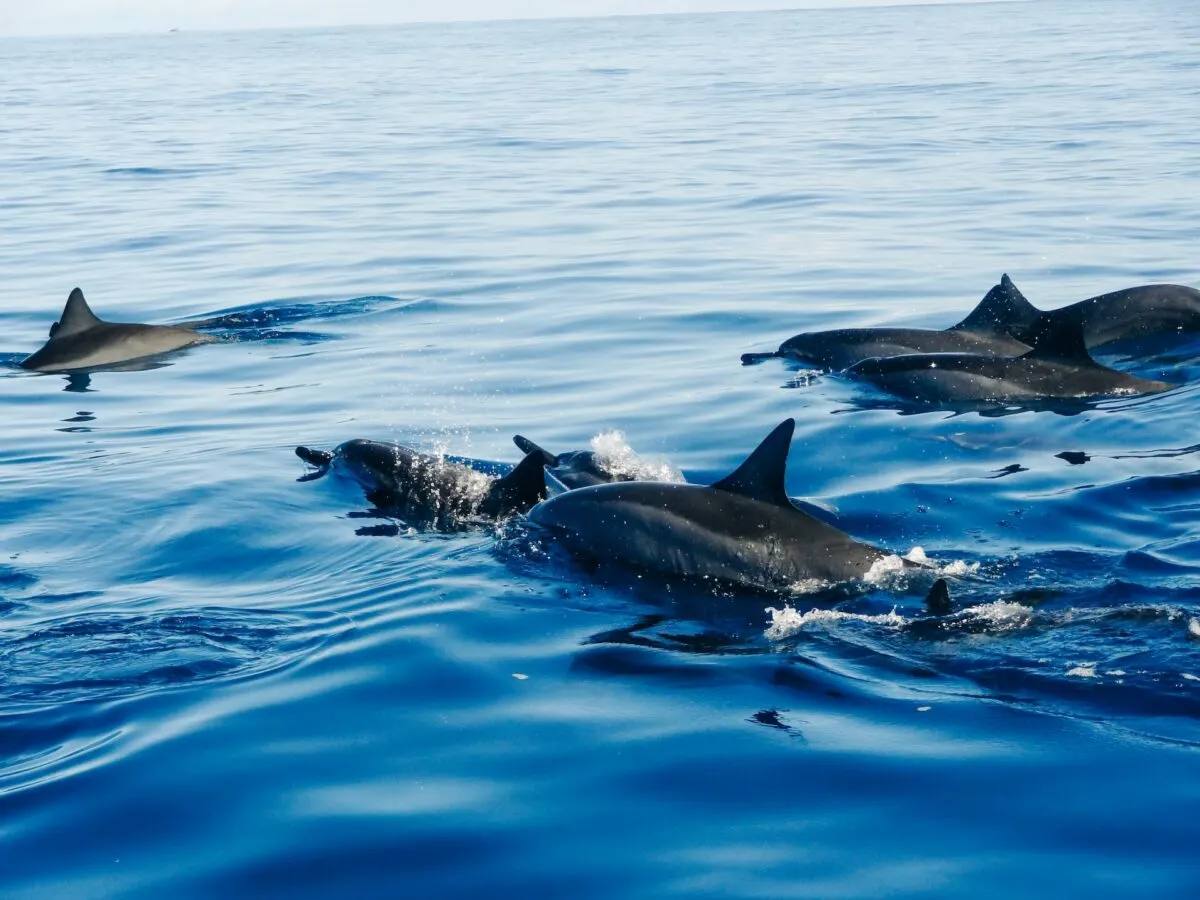Do you know how dolphins use echolocation to navigate and hunt? Let’s find out.
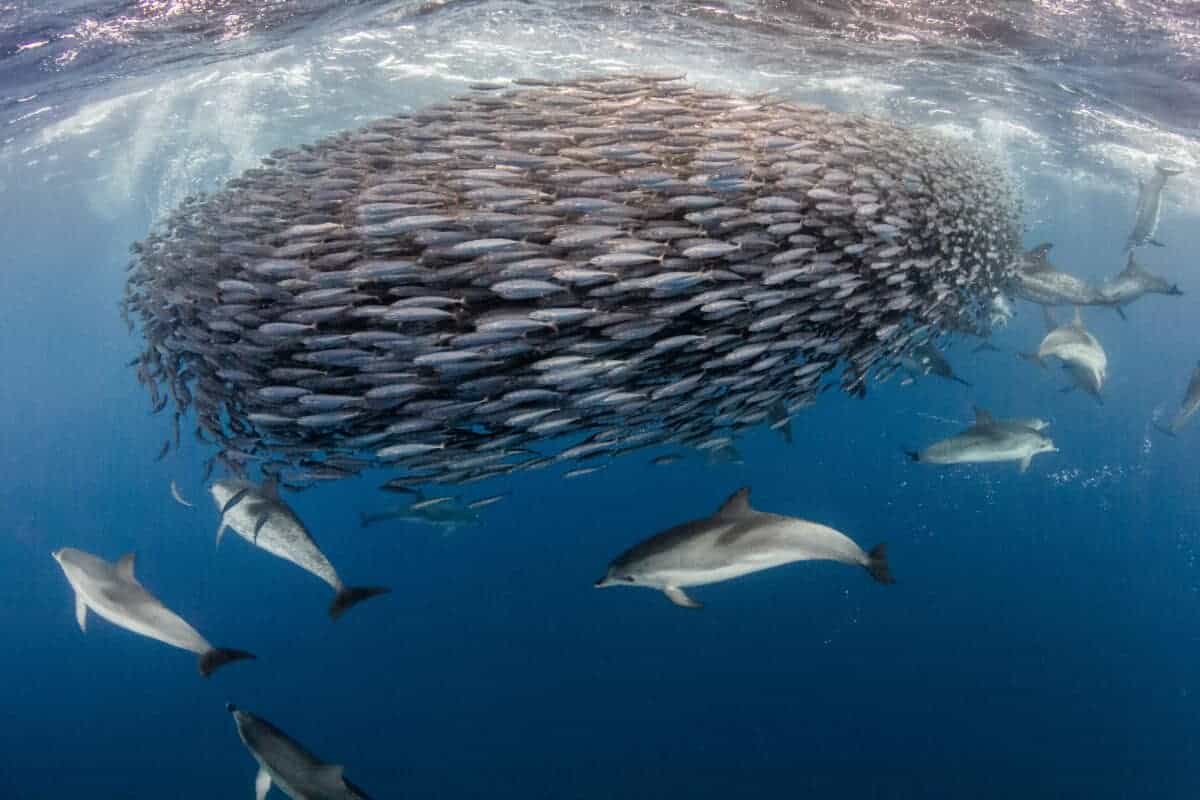
Echolocation is a fascinating biological phenomenon that allows certain animals to use sound waves to navigate their environment. This remarkable ability has evolved in numerous species, including some marine mammals, that depend on it for survival.
Dolphins are fascinating marine mammals, as they are among the most skilled echolocators in the animal kingdom. They rely on echolocation, enabling them to locate food, communicate with pod members, and navigate the often murky waters they inhabit.
Their echolocation abilities are so refined that they can detect objects smaller than a tennis ball from over 100 feet away! Another impressive marine mammal is the orca whale, uncover the largest one ever found here.
Join us as we investigate how echolocation works, how dolphins use it to navigate and hunt, and lastly how noise pollution poses a real threat to them.
Key Points
- Echolocation is a biological phenomenon used by certain animals to navigate and interpret their surroundings.
- Dolphins have evolved specialized adaptations to enhance their echolocation abilities, including structures in their jaws and a fatty pad called the melon.
- Dolphins use echolocation for navigation, creating mental maps of their environments and detecting changes in underwater objects.
- Echolocation is crucial for dolphins’ hunting techniques, allowing them to locate and capture prey accurately.
- Underwater noise pollution disrupts dolphins’ echolocation, impairing communication, hunting abilities, and causing stress and health issues.
Understanding Echolocation
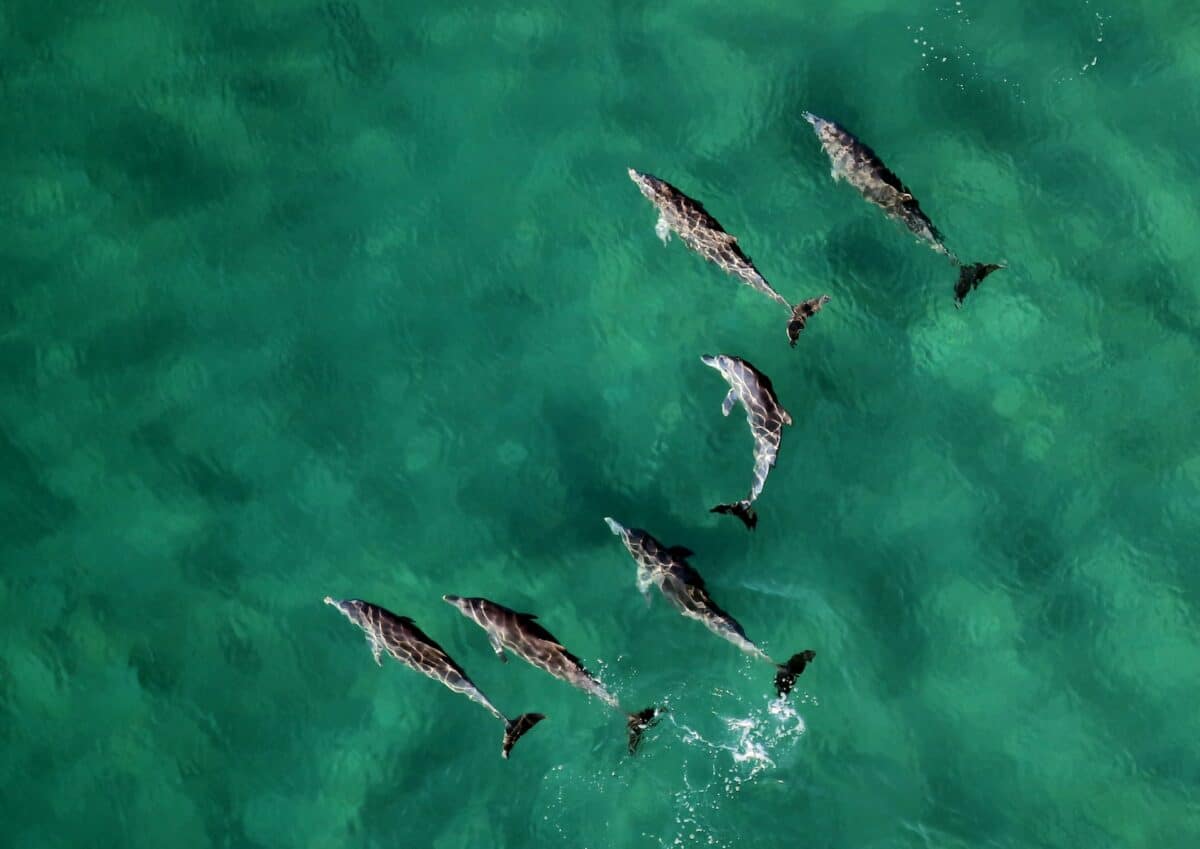
Echolocation is the biological phenomenon by which certain animals emit sounds and then interpret the resulting echoes to navigate their surroundings. This mechanism is essential for animals living in environments with low visibility environments, such as marine mammals living in dark or murky waters. Sound waves travel differently through water than air, making echolocation even more valuable for aquatic animals.
Sound waves travel through the water much faster than they do in the air, at roughly 5,000 feet per second. This allows marine mammals to produce high-frequency clicks or whistles that travel long distances and return to their ears as echoes. By interpreting the echoes of these sounds, marine mammals can determine the location, size, and shape of nearby objects.
Dolphins have evolved specific adaptations to enhance their echolocation abilities. For example:
- They have specialized structures in their jaws that help them produce high-frequency clicks.
- They also have a fatty pad on their forehead called the melon. This acts as an acoustic lens, focusing the sound waves into a beam.
- Their brains are highly adapted to process these complex sound signals, allowing them to quickly and accurately interpret the echoes and make decisions based on the information they receive.
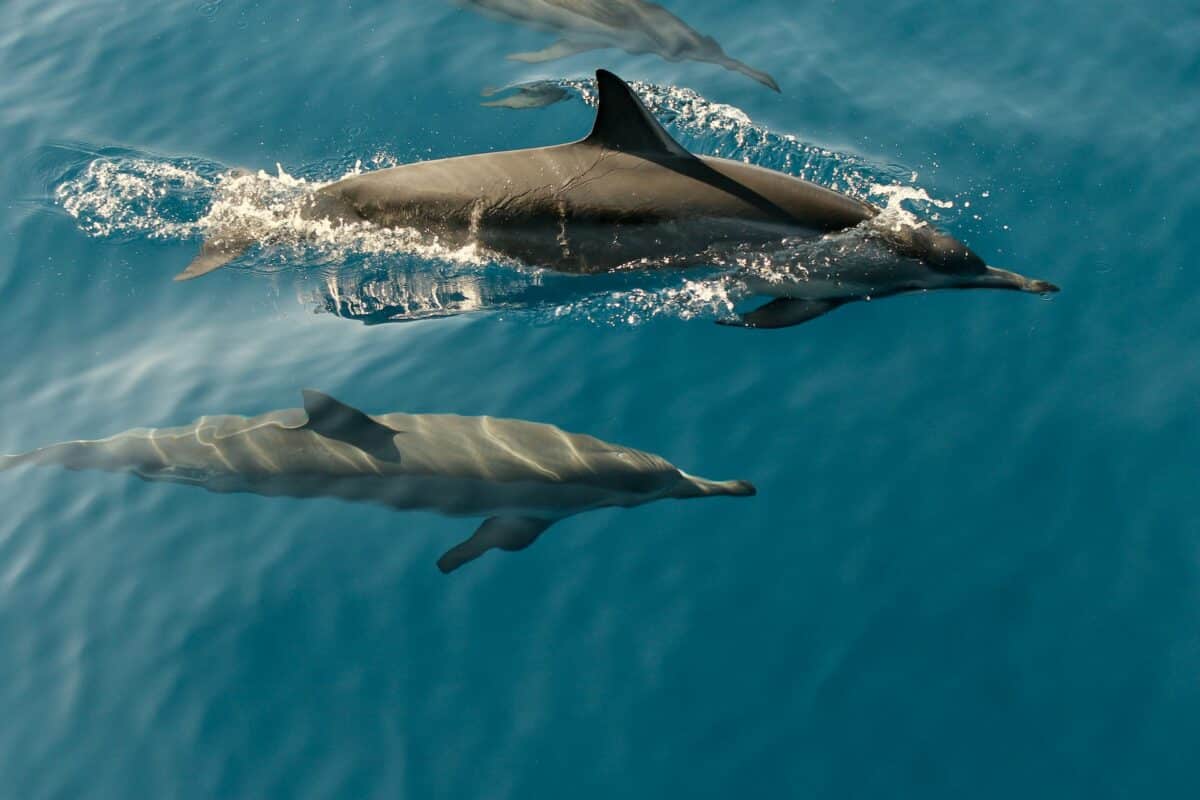
Dolphins are remarkable marine mammals that have developed highly sophisticated navigation abilities. One of the most important tools in their navigation toolkit is echolocation. Dolphins can precisely orient themselves and navigate their underwater environment by emitting high-frequency clicks and interpreting the resulting echoes.
The dolphin brain plays a crucial role in processing echolocation signals. Their auditory regions of the brain are highly specialized for this task, and dolphins can process complex sound signals much faster than humans. This allows them to quickly make sense of the echoes and use the information to make decisions about their movements and surroundings.
Studies on dolphin navigation and spatial mapping have revealed even more insights into their remarkable abilities. For example, researchers have found that dolphins can create mental maps of their environments, allowing them to navigate to specific locations easily. They can also detect subtle changes in the shape and composition of underwater objects, which can help them navigate obstacles or locate prey.
The navigation abilities of dolphins are truly remarkable and demonstrate the incredible adaptations these animals have undergone to survive in their environment.
Hunting Techniques Employed by Dolphins

Dolphins are skilled hunters that employ various techniques to catch their prey. One of the most essential tools in their hunting toolkit is echolocation, which allows them to locate prey accurately. By emitting high-frequency clicks and interpreting the resulting echoes, dolphins can detect nearby objects’ size, shape, and location, including potential prey.
Dolphins also often hunt in groups called pods, working together to surround and capture prey. This requires clear communication and coordination among pod members, which is facilitated by their sophisticated system of echolocation and vocalizations.
Another hunting strategy dolphins use is corralling and herding techniques. These include using their bodies to create walls or barriers that trap schools of fish. This makes it easier for the dolphins to pick them off individually. By working together, dolphins can create complex hunting scenarios that allow them to take down larger prey.
Examples of dolphin hunting behaviors in the wild include:
- Chasing down individual fish.
- Driving schools of fish into shallow water.
- Even using their tails to stun or incapacitate prey.
How Dolphins Use Echolocation For Communication
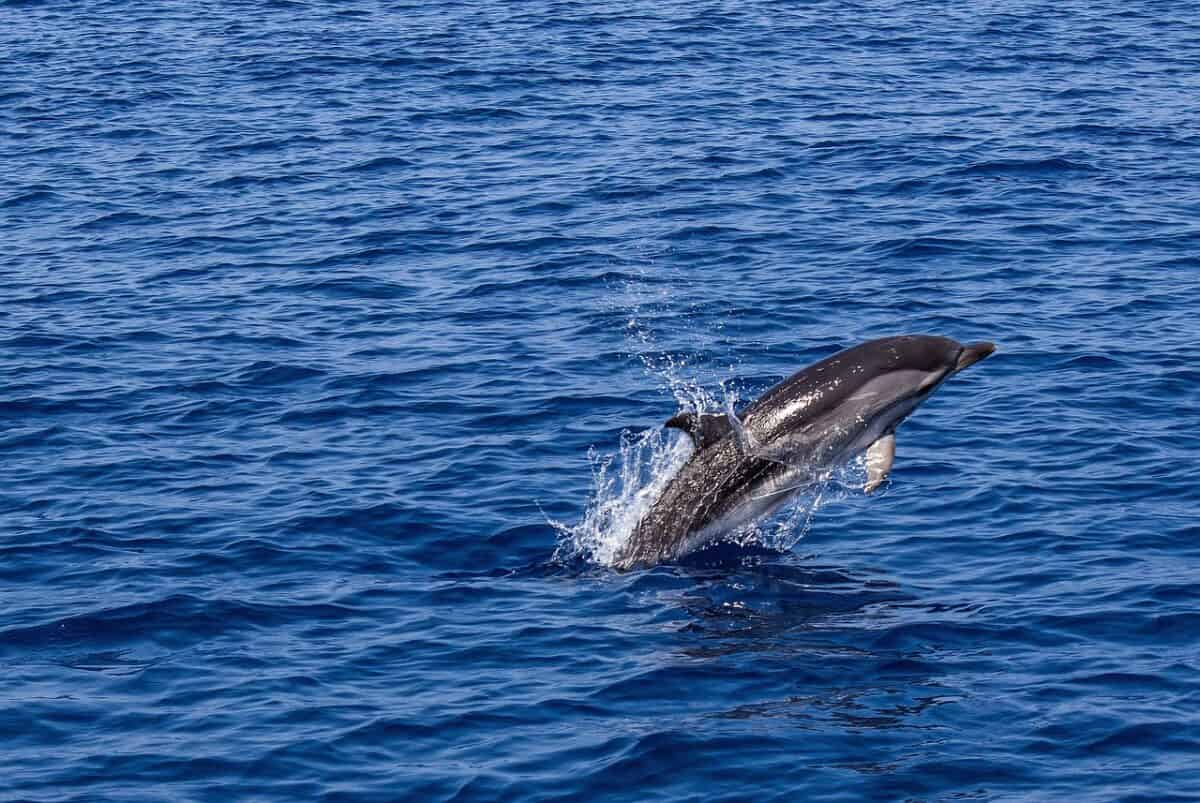
Dolphins use a variety of echolocation signals to communicate. These include different types of clicks and whistles, each with unique properties and purposes. Clicks are short, broadband sounds that dolphins use to navigate and locate prey. Meanwhile, whistles are longer, more tonal sounds used for social communication.
Dolphins can communicate information about their identity, location, and emotional state using these sounds. They can also coordinate their movements and behavior with other pod members.
One vital element of dolphin communication is the signature whistle. This is a unique vocalization that dolphins use to identify themselves to others. By recognizing and responding to each other’s signature whistles, dolphins can build and maintain complex social relationships, demonstrating the importance of echolocation in their communication and social behaviors.
Echolocation Research and Technological Applications
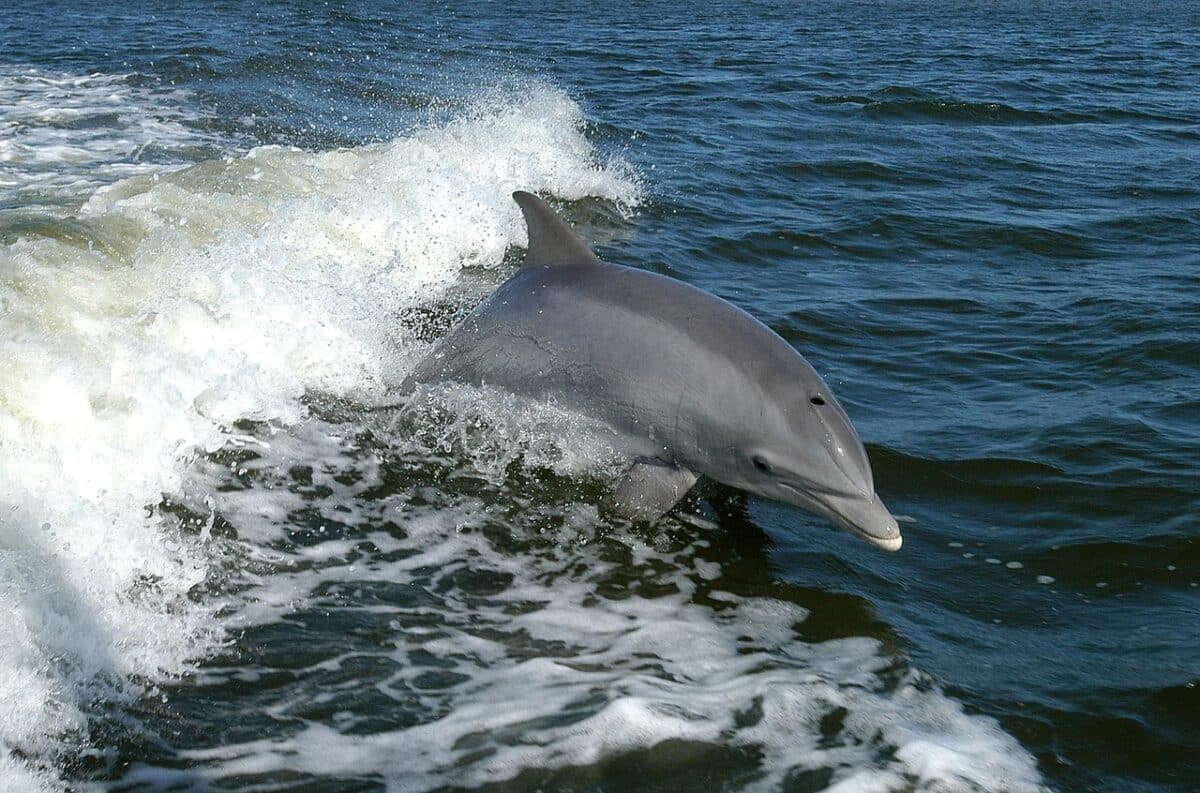
Research on dolphin echolocation has provided valuable insights into marine mammal behavior and led to technological applications in various fields. Studies and experiments on dolphin echolocation have revealed this biological phenomenon’s remarkable accuracy and efficiency, inspiring researchers to incorporate these principles into sonar systems for human use.
By mimicking the structure and functioning of dolphin echolocation, scientists have developed highly advanced sonar systems that help in marine exploration, military operations, and medical imaging. These technological applications demonstrate the practical applications of dolphin echolocation research and highlight the potential for further advancements in various fields.
You might also like: Discovering the Fascinating World of the Armadillo.
The Threat of Noise Pollution
Underwater noise pollution generated by various human activities such as shipping, seismic exploration, and recreational watercraft can have detrimental effects on dolphins. The excessive noise levels interfere with their ability to effectively use echolocation, which is a crucial tool for survival.
When exposed to continuous noise from sources like boat engines or sonar systems, the dolphins’ echolocation signals become masked or distorted, resulting in impaired communication and compromised hunting abilities. The noise disrupts the accuracy and range of their acoustic perception, leading to confusion and disorientation.
Noise pollution can have severe consequences on their feeding patterns, reproductive behavior, and overall well-being. Furthermore, prolonged exposure to noise pollution can elevate stress hormone levels, weaken immune systems, and even lead to hearing damage or loss.
FAQs About How Dolphins Use Echolocation
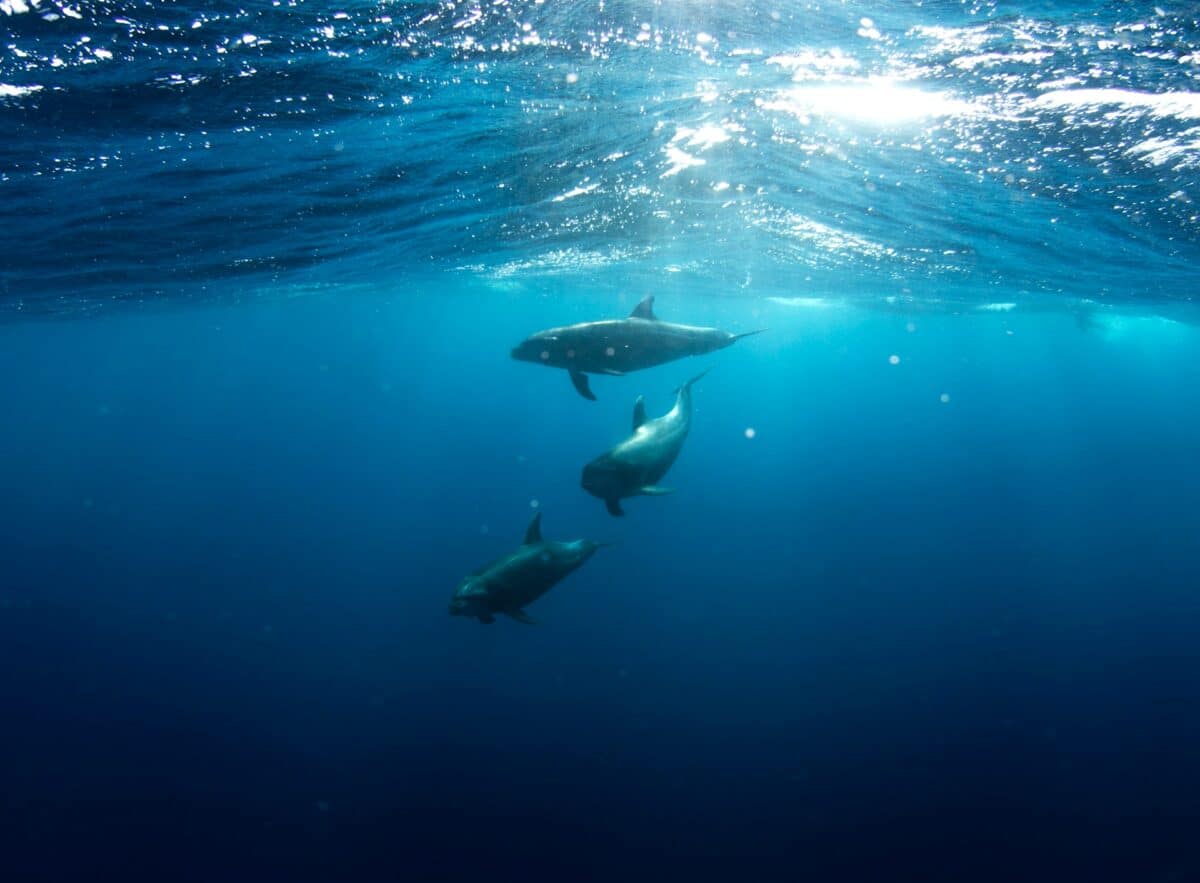
Dolphins use their melon, a fatty pad on their forehead, for echolocation. It acts as an acoustic lens, focusing sound waves into a beam for more effective detection and interpretation of echoes.
With echolocation, dolphins can effectively “see” or detect objects in their surroundings up to several hundred feet away, depending on water conditions and the size and nature of the object.
Dolphins communicate when hunting through a combination of vocalizations and body movements. They use clicks and whistles to coordinate their actions and communicate information about prey location and behavior. They also employ synchronized movements and herding techniques to corral and capture their prey.
How Dolphins Use Echolocation: Wrapping Up
In conclusion, echolocation plays a pivotal role in the lives of dolphins, serving as a vital tool for their survival and success in the marine environment. Dolphins utilize echolocation for a myriad of purposes, including navigation, prey detection, hunting, communication, and social interactions.
However, the increasing presence of underwater noise pollution poses a significant threat to their echolocation abilities. Continuous noise from human activities disrupts their acoustic environment and impairs their communication, navigation, and hunting skills.
Recognizing the critical role echolocation plays in the lives of dolphins, urgent action is needed to reduce noise pollution. By reducing human-generated noise in their environment, we can protect the invaluable echolocation abilities of dolphins and ensure their survival in our oceans.
Thank you for reading this article about how dolphins use echolocation! This is only one of the many impressive abilities of animals, also take a look at:
- Dolphins Are Unexpected Casualties of the Russia-Ukraine War
- Discover the Most Social Species
- The World’s Largest Land Mammal
- All About Deer Poop
Join our Forum for free today!


